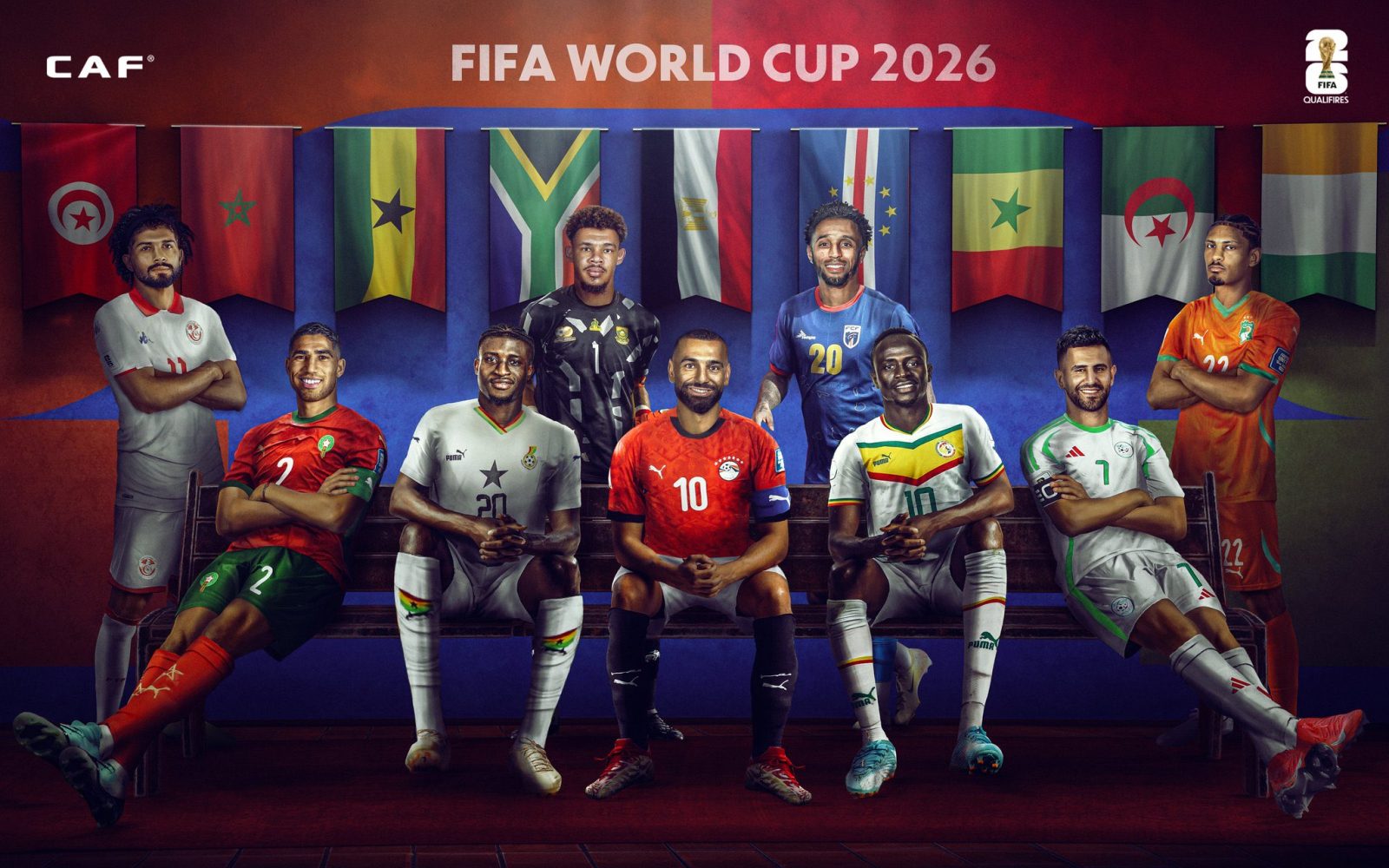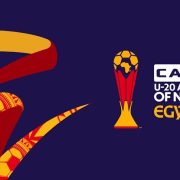Côte d’Ivoire, Morocco, Tunisia, Egypt, Algeria, Ghana, Cape Verde, South Africa, and Senegal have all qualified automatically. Here’s a brief look at how they did it.
By Tuka Letura
The CAF qualifiers for the 2026 FIFA World Cup wrapped up this week, marking the end of a dramatic chapter that saw nine nations secure automatic tickets to North America, while four others earned a second chance through a high-stakes, single-location playoff in Morocco — one of two rounds of playoffs.
The expansion of the World Cup to 48 teams has altered the qualification process by increasing Africa’s direct slots to nine and introducing a new, intense mini-competition to determine which nation will claim Africa’s single inter-confederation play-off berth for another shot at qualification.
In this piece, we’ll take a closer look at how the qualifiers unfolded, the nine teams that have already booked their spots, and those still fighting for a place.
Côte d’Ivoire, Morocco, Tunisia, Egypt, Algeria, Ghana, Cape Verde, South Africa, and Senegal have all qualified automatically. Here’s a brief look at how they did it.
Morocco were the first African side to book their ticket to the 2026 World Cup, cruising through Group E with six wins from six following Eritrea’s withdrawal. Their 5–0 rout of Niger on 5 September sealed qualification early. Under Walid Regragui, the Atlas Lions have retained the core of their 2022 squad while adding fresh talent, marking their third consecutive World Cup appearance and seventh overall — just one behind Cameroon, who hold the record with nine.
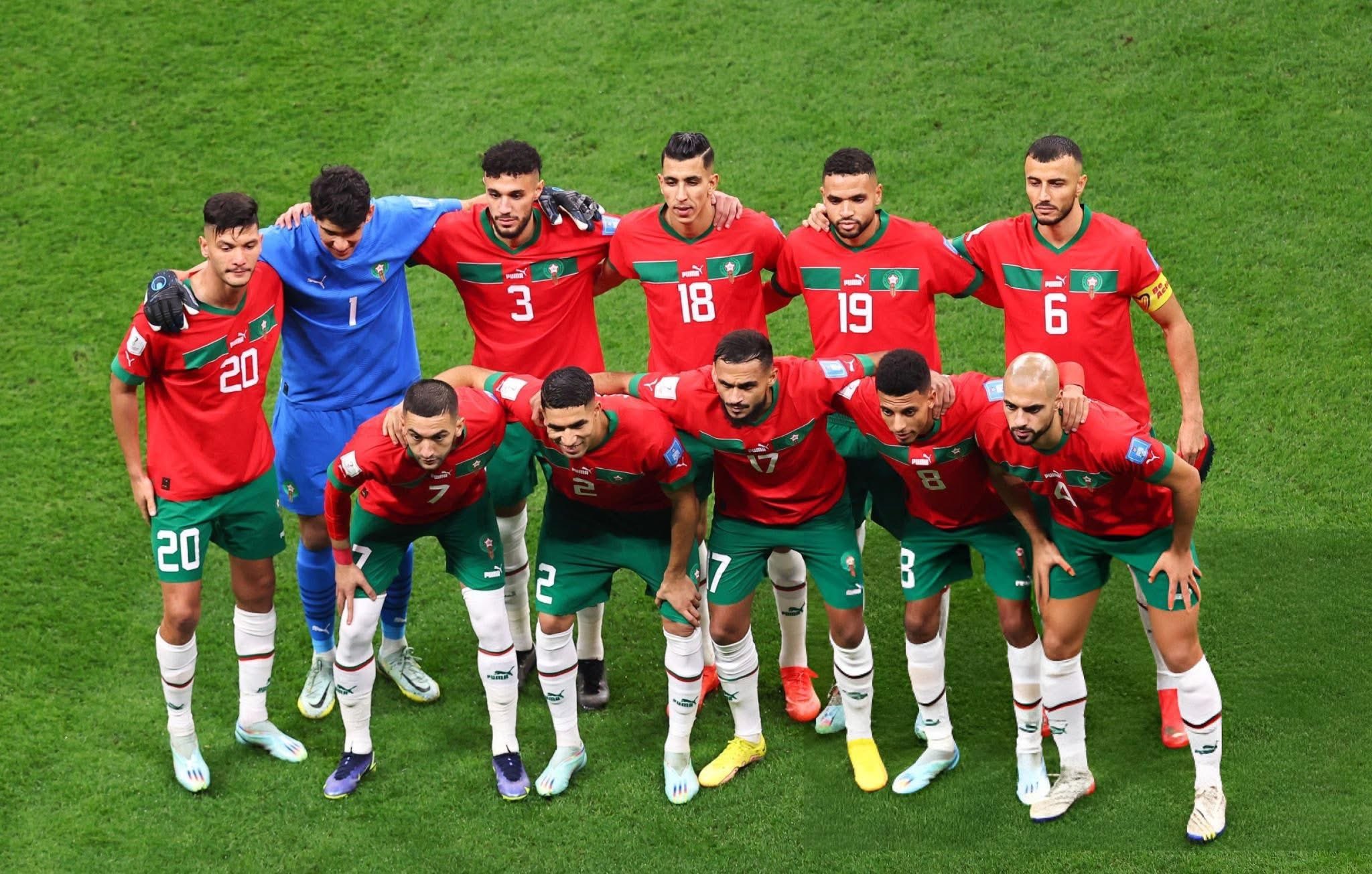
Tunisia topped Group H with nine wins from ten, scoring 22 goals and conceding none. After a turbulent coaching spell, Sami Trabelsi steadied the team and secured qualification with two games to spare. Like Morocco, the 2026 edition will be their seventh World Cup and third consecutive appearance, as the Carthage Eagles now aim for a first-ever knockout-stage berth.
Egypt sealed their return to the World Cup with a 3–0 win over Djibouti on 8 October, topping Group A with 26 points. Mohamed Salah led the charge with nine goals, edging closer to Hossam Hassan’s national record. Hassan, now the team’s coach, becomes the first Egyptian to reach the World Cup both as a player and as a manager.
Algeria also confirmed their return to the World Cup with a 3–0 win over Somalia on 9 October, clinching top spot in Group G with a game to spare. Although listed as Somalia’s home fixture, the match was played in Algeria, giving home fans the perfect stage to celebrate their team’s comeback.
The 2026 tournament will be Algeria’s fifth World Cup appearance and their first since 2014, when they famously pushed eventual champions Germany to extra time in the Round of 16.
Ghana booked their fifth World Cup ticket with a hard-fought 1–0 win over Comoros in Accra on 12 October, thanks to Mohammed Kudus’ decisive strike. The Black Stars topped Group I, reaffirming their pedigree after the disappointment of Qatar 2022.
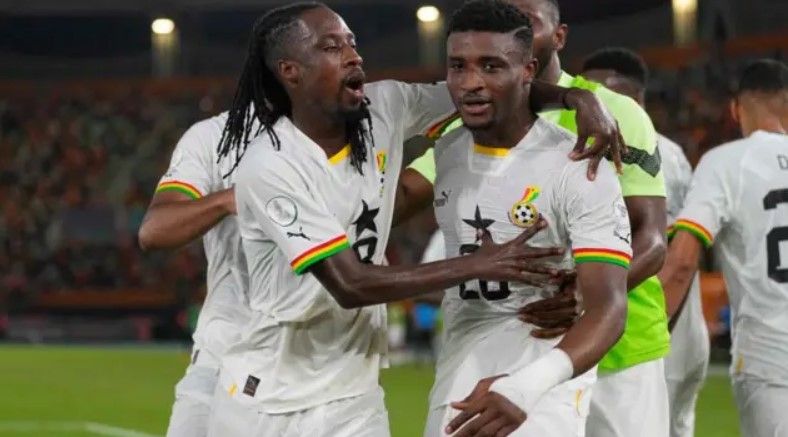
Ghana have now qualified for five of the last six tournaments since their debut in 2006. Their best run remains the 2010 campaign, when they reached the quarter-finals.
Cabo Verde completed the dream on 13 October, defeating Eswatini 3–0 in Praia to qualify for their first-ever World Cup. Only 8,000 fans packed into the National Stadium to witness history as the Blue Sharks delivered Africa’s most inspiring story of the campaign. They become the second-smallest nation ever to qualify for the World Cup, after Iceland in 2018.
Under Pedro ‘Bubista’ Brito, the island nation has quietly built momentum since 2020, establishing themselves as a regular AFCON contender and now breaking new ground on the world stage. For the first time, Cabo Verde will compete at a World Cup.
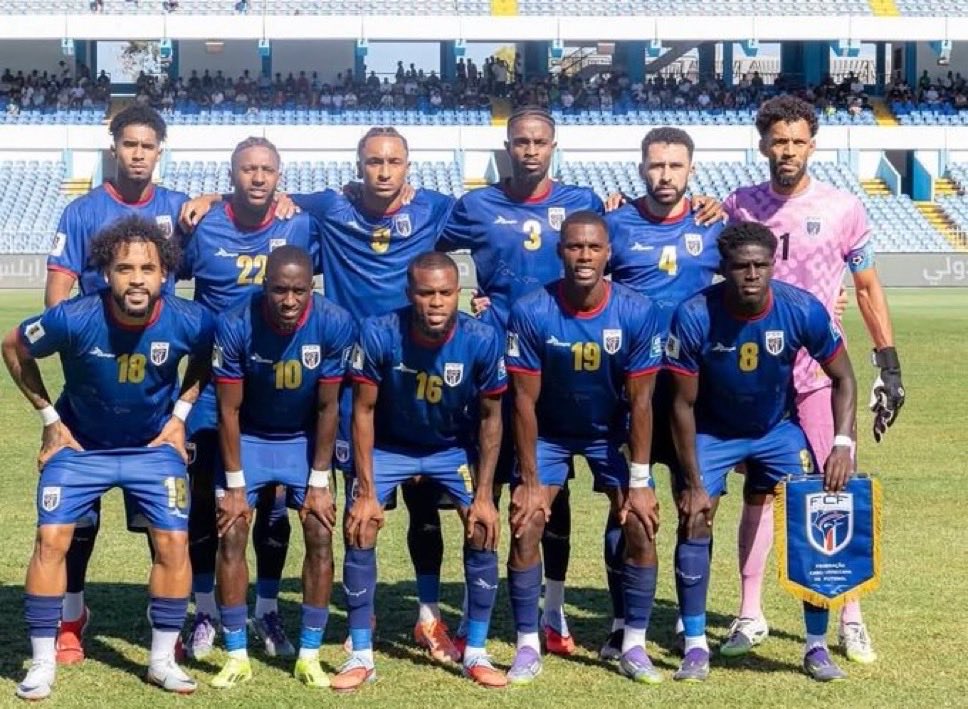
South Africa are back on the World Cup stage after 16 years, sealing qualification with a commanding 3–0 win over Rwanda in Nelspruit on 14 October.
It wasn’t a smooth ride. A points deduction for fielding an ineligible player briefly knocked them off the top spot, but Hugo Broos’ men steadied themselves when it mattered. On the final day, they handled their business while Benin’s collapse in Nigeria handed Bafana Bafana a lifeline and a ticket to North America.
This will be their fourth World Cup appearance and their first since 2010, a comeback filled with belief that, this time, South Africa can push beyond the group stage.
African champions, Côte d’Ivoire, left it late but got the job done, sealing their World Cup return with a decisive win over Kenya on the final day. Franck Kessié’s early strike and Yan Diomande’s finish secured top spot in Group F. The Elephants, alongside Tunisia, were the only teams not to concede a goal throughout the CAF qualifiers.
Under Emerse Faé, the Elephants look reborn. The AFCON-winning coach becomes the first Ivorian to lead the team to a World Cup. After three consecutive group-stage exits, Côte d’Ivoire now heads into 2026 with the look of genuine contenders.
Eritrea’s Withdrawal: How One Team’s Absence Changed the Balance of CAF World Cup Qualifying
Eritrea withdrew from the World Cup qualifiers in November 2023 before a single game was played. It might have seemed like a minor issue, but it created a significant ripple effect in how the qualifiers were assessed.
Here’s why: the CAF qualifiers were originally designed with nine groups of six teams each. The plan was simple:
- The top team in each group qualifies directly for the World Cup.
- The four best second-placed teams across all groups move on to the playoff round.
However, Eritrea’s withdrawal left one group with only five teams instead of six, creating a mathematical imbalance. Teams in six-team groups played two more matches than those in the five-team group, and those extra matches were typically against the weakest sides, offering runners-up in larger groups more opportunities to earn points and improve their goal difference.
To make things fair, CAF decided to ignore the results against the bottom team in every six-team group when comparing all second-place teams. This ensured that each runner-up’s record was based on the same number of counted games as those in the smaller, five-team group.
What did that change?
- If a team had thrashed the weakest side 6–0, that win suddenly didn’t count in the “best runners-up” table.
- But in the five-team group (the one missing Eritrea), all games still counted, nothing was removed.
This adjustment reshuffled the standings: some teams slipped down, others climbed up, and that ultimately influenced which four nations reached the playoffs.
CAF’s method isn’t new. It has been used in previous tournaments where group sizes were uneven. Still, not everyone was pleased. Some argued it unfairly penalised teams for winning big, while others saw it as the only equitable way to maintain balance.
The Four-Team Continental Playoff: Format, Seedings, and What’s at Stake
With the group stage complete and recalculations settled, attention now turns to the CAF continental playoff, the final possible African route to the 2026 World Cup. Four runners-up have earned their place: Cameroon, DR Congo, Gabon, and Nigeria.
CAF will stage this as a centralised mini knockout tournament in Morocco, featuring:
- Two single-leg semi-finals on 13 November 2025, and
- A single-leg final on 16 November 2025.
There will be no home-and-away legs because each tie is a one-off. If the match ends level after 90 minutes, it goes to extra time and then penalties if needed.
How the Matchups Are Set
Seedings for the CAF playoff are determined by the FIFA Men’s World Rankings. Under the format, the highest-ranked runner-up faces the lowest-ranked, while the second-highest meets the third-highest.
Based on the current rankings, the semi-final pairings are:
- Nigeria vs Gabon
- Cameroon vs DR Congo
Both fixtures will be played as single-leg ties in Morocco. If a match ends level after 90 minutes, it will go to extra time and, if needed, penalties.
The winners of each semi-final will then meet in the final on 16 November 2025, with the victor earning the right to represent Africa at the inter-confederation playoff in March 2026.
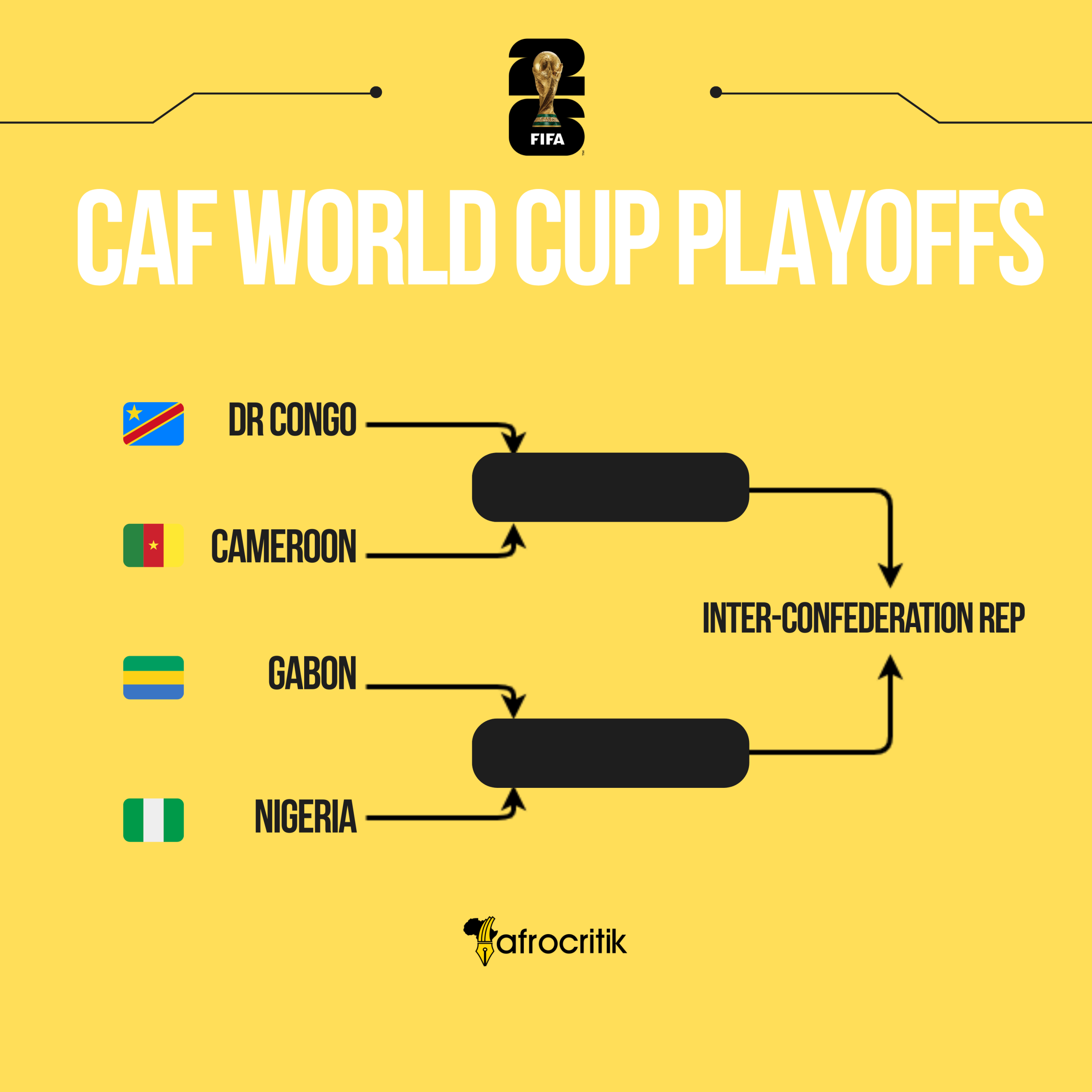
What’s Next?
The winner of the CAF playoff won’t automatically qualify for the World Cup but will advance to the inter-confederation playoff in March 2026, a global qualifying tournament that decides the final two spots at the World Cup.
That stage will feature six teams:
One each from Africa (CAF), Asia (AFC), South America (CONMEBOL), and Oceania (OFC), two from North and Central America (CONCACAF), since that region hosts the World Cup.
These six teams will be divided into two brackets of three:
- In each bracket, the two lower-ranked sides face off in a semi-final.
- The winner then meets the seeded team in a one-off final.
- The winners of each final (one per bracket) claim the last two World Cup berths.
All matches will be single-leg ties — no second chances — and will be held in North America, reportedly in Mexico.
Ultimately, the CAF playoff winner must survive one or two knockout games (depending on their ranking) in March 2026 to secure Africa’s tenth and final place at the expanded 2026 FIFA World Cup. While some have already booked their place, for others, the dream remains a far cry. It’s still a long road from qualifying.
Tuka Letura is an experienced sports writer with over six years of experience in the craft. He uses data and statistics to provide analysis and commentary. From regional to worldwide competitions, he has covered a wide range of sports-related events and topics. He is devoted to sharing his enthusiasm for sports with his audience and engaging them with interesting anecdotes and viewpoints.


